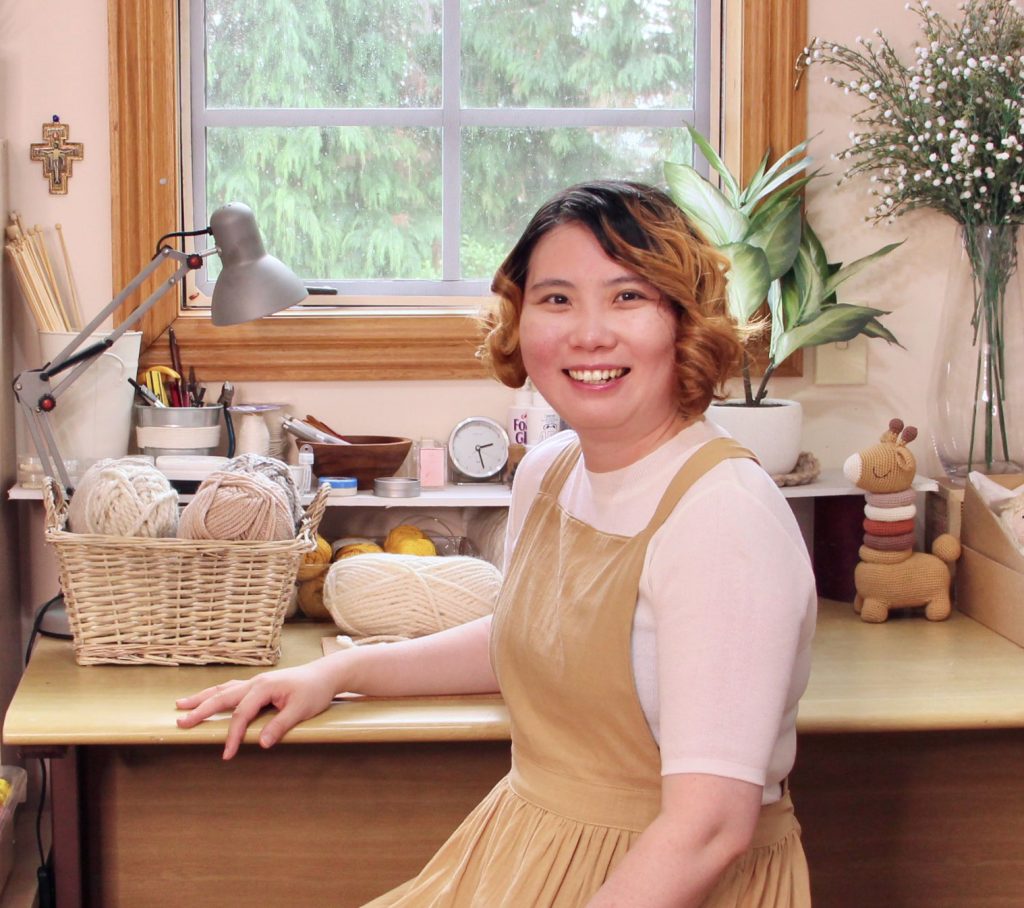Rotorua designer and crocheter Lauren (Soo-Eun) Lee is the creative mind behind the enchanting Roundline range of crochet toys and illustrations. Originally from South Korea, Lauren has built on her arts and design training to develop her professional life here in Aotearoa as a toy maker, photographer, and portrait artist.
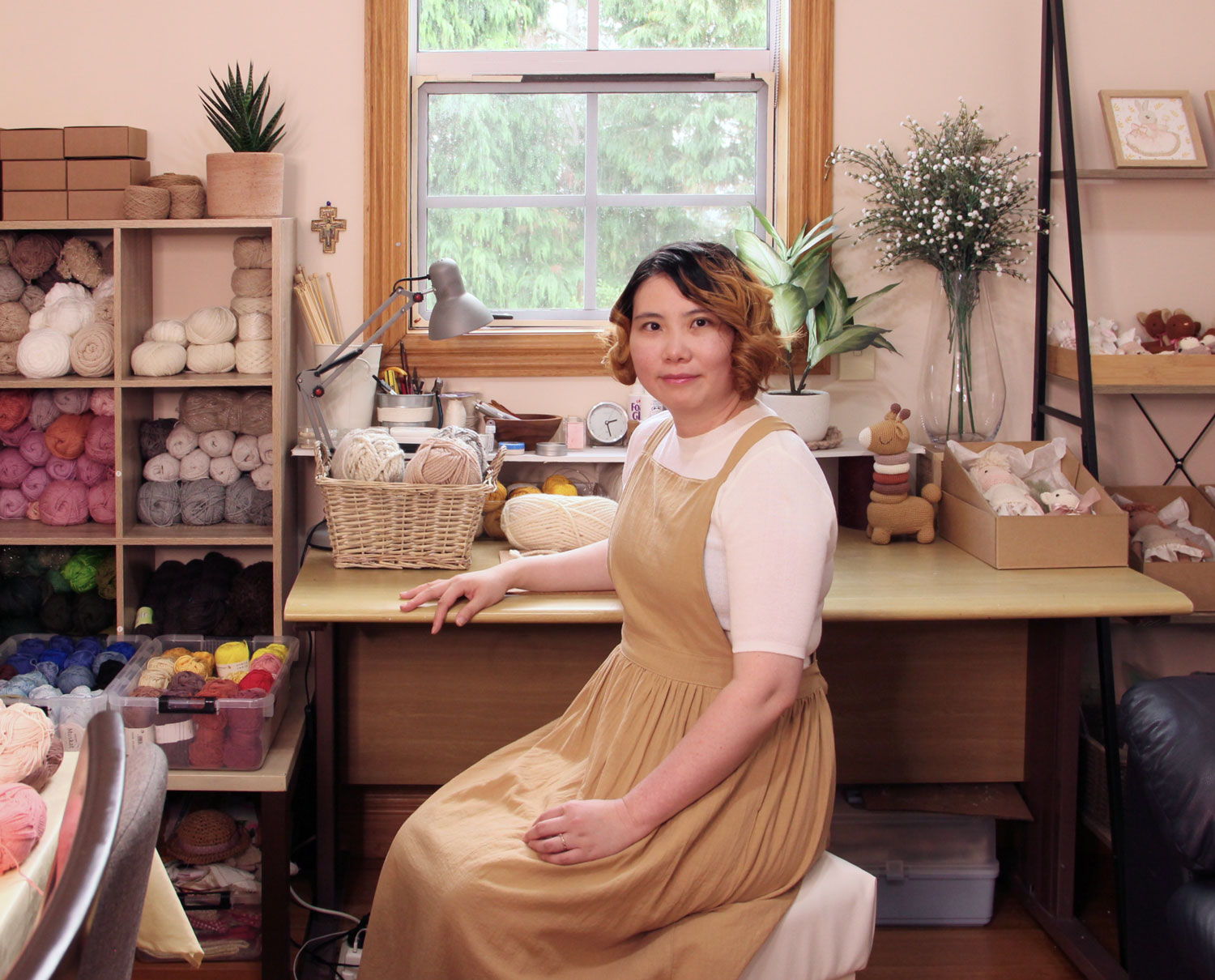
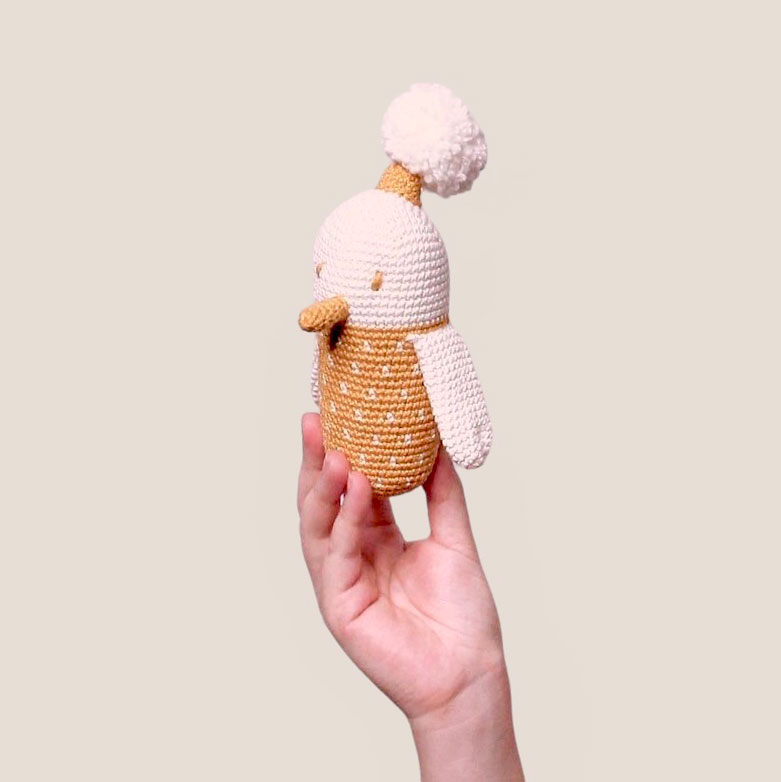
What do you make?
I am an local artist in Rotorua, I make so many art things! Mainly I design crochet toys and do painting works. I also make some various illustration works for simple stationary stuff and stickers.
How did you get into your craft?
My journey into crochet toys is deeply rooted in my childhood experiences. Growing up, I didn’t have many toys to play with, which fuelled my fascination with collecting unique toys. Each toy I acquired represented more than just an object; it symbolised a piece of the childhood I longed for. This desire to surround myself with creativity and imagination ultimately led me to delve deeper into the craft.
Making crochet toys started as a personal hobby for me, which has now developed into a profession. Whether through formal education, self-study, or hands-on experience, I’ve continually pushed myself to expand my knowledge and expertise in the field. This journey has been incredibly rewarding, and I’m grateful for every opportunity that has allowed me to further develop my craft.
Do you have formal training or qualifications in your craft?
With a formal training background in the arts and design, I earned my Bachelor of Visual Art and Graphic Design from both the University of Auckland and AUT, honing my skills and knowledge. While my education provided a strong foundation, my journey into crochet toy making has been largely self-directed. Through dedicated self-study and hands-on practice, I’ve progressively honed my expertise in this craft. For aspiring designers looking to master the basics of crochet toy creation, investing in books and patterns with detailed tutorials and explanations of crochet techniques is invaluable. Additionally, exploring and inventing new stitches to incorporate into patterns can be rewarding, albeit time-consuming—I personally invested three years in this endeavour.
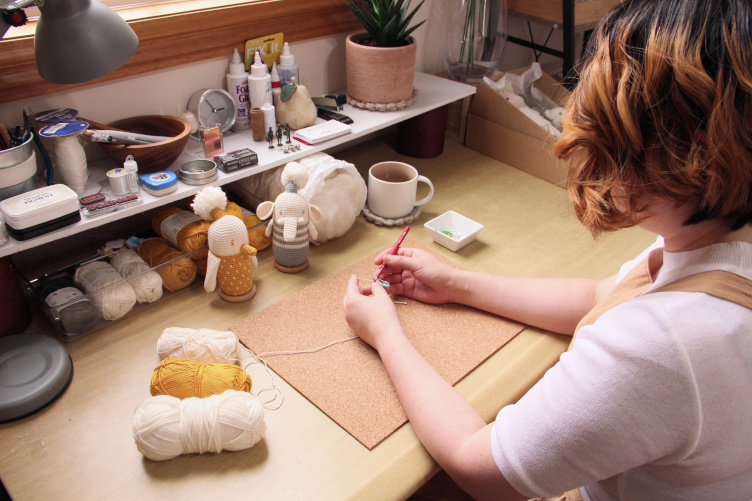
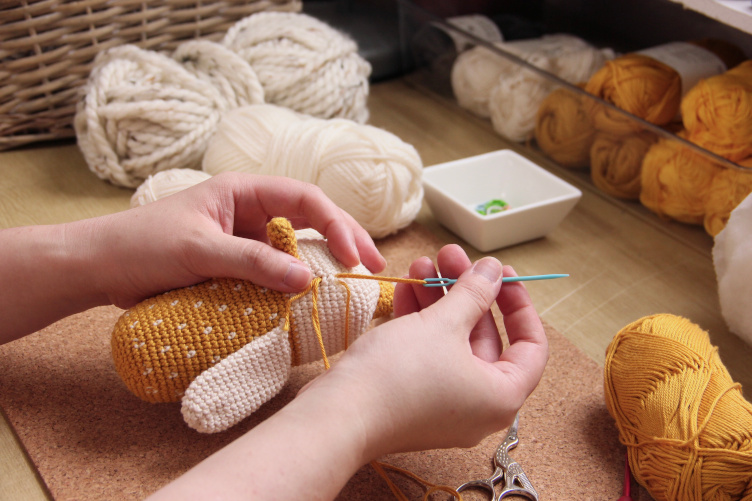
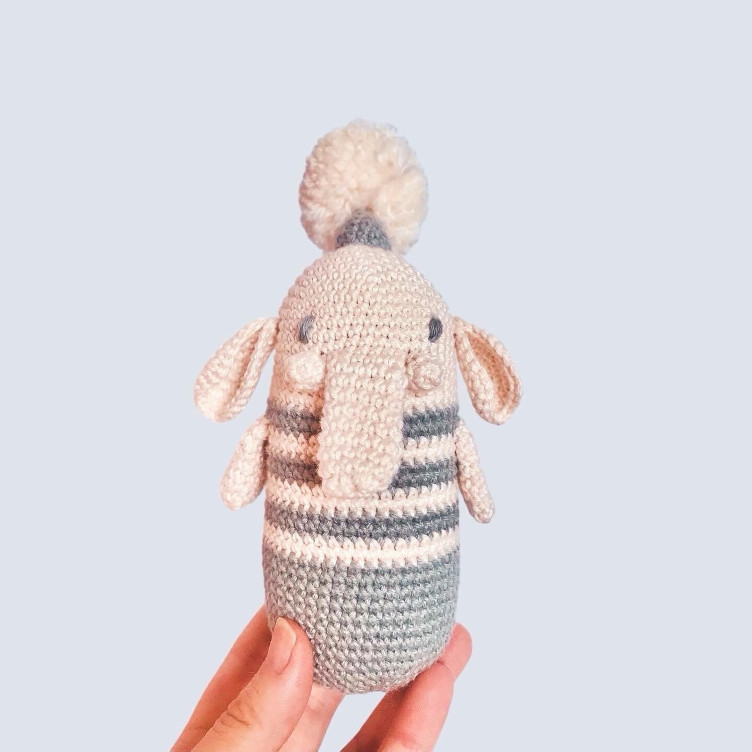
Your favourite materials, tools and processes?
My preferred materials for crafting crochet toys are cotton and alpaca fibre fill. Cotton is particularly suitable for Amigurumi, producing beautiful and sturdy toy forms that are safe for young children and babies. Alpaca fibre fill surpasses polyester fibre fill in softness and durability, making it an excellent choice for stuffed toys designed to last.
When it comes to crochet hooks, I typically opt for a 3mm or 2.50mm size to match with 5ply or 8ply (DK) yarns. I find that using a silicone-handled crochet hook enhances sensitivity to hand pressure, which is especially beneficial when crafting intricate and unique toys.
My favourite part of the process is sketching and designing new characters for toys. It’s immensely enjoyable to unleash creativity and imagine fresh forms and personalities coming to life through crochet.
Tell us about some of the techniques involved in producing one of your pieces:
I begin my toy design process by sketching and conceptualising the character, which serves as the blueprint for my crochet work. Precision is key, so I meticulously record the number of stitches required, particularly for the larger components of the toy. Size plays a crucial role in ensuring the final product meets design specifications, prompting me to occasionally create sample pieces of varying sizes to fine-tune proportions.
In my crochet technique, I predominantly utilize x single crochet stitches over v single crochet stitches. This choice allows for smaller stitches, enabling intricate detailing in my creations. Moreover, I’ve innovated my own method of invisible decrease stitches, adding a unique touch to my toy designs.
One distinguishing factor in my work is my tight hand pressure, which yields consistently even stitches. This personalised approach results in a distinct stitch size that adds character to each piece. It’s fascinating how individual hand pressure nuances contribute to the uniqueness of each crochet creation.
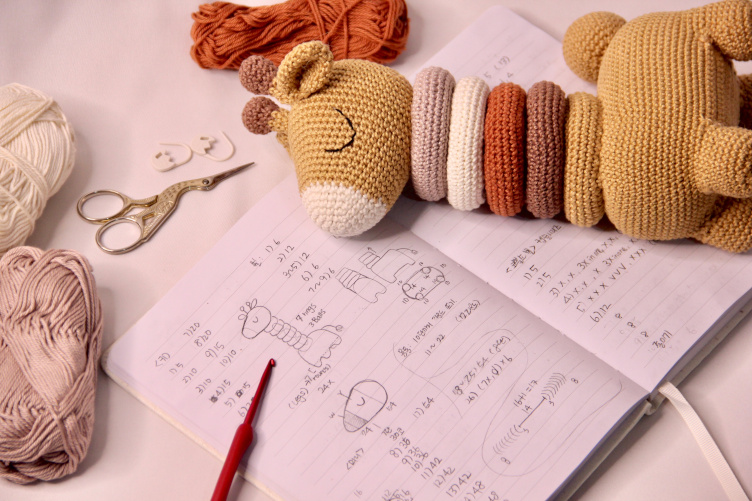
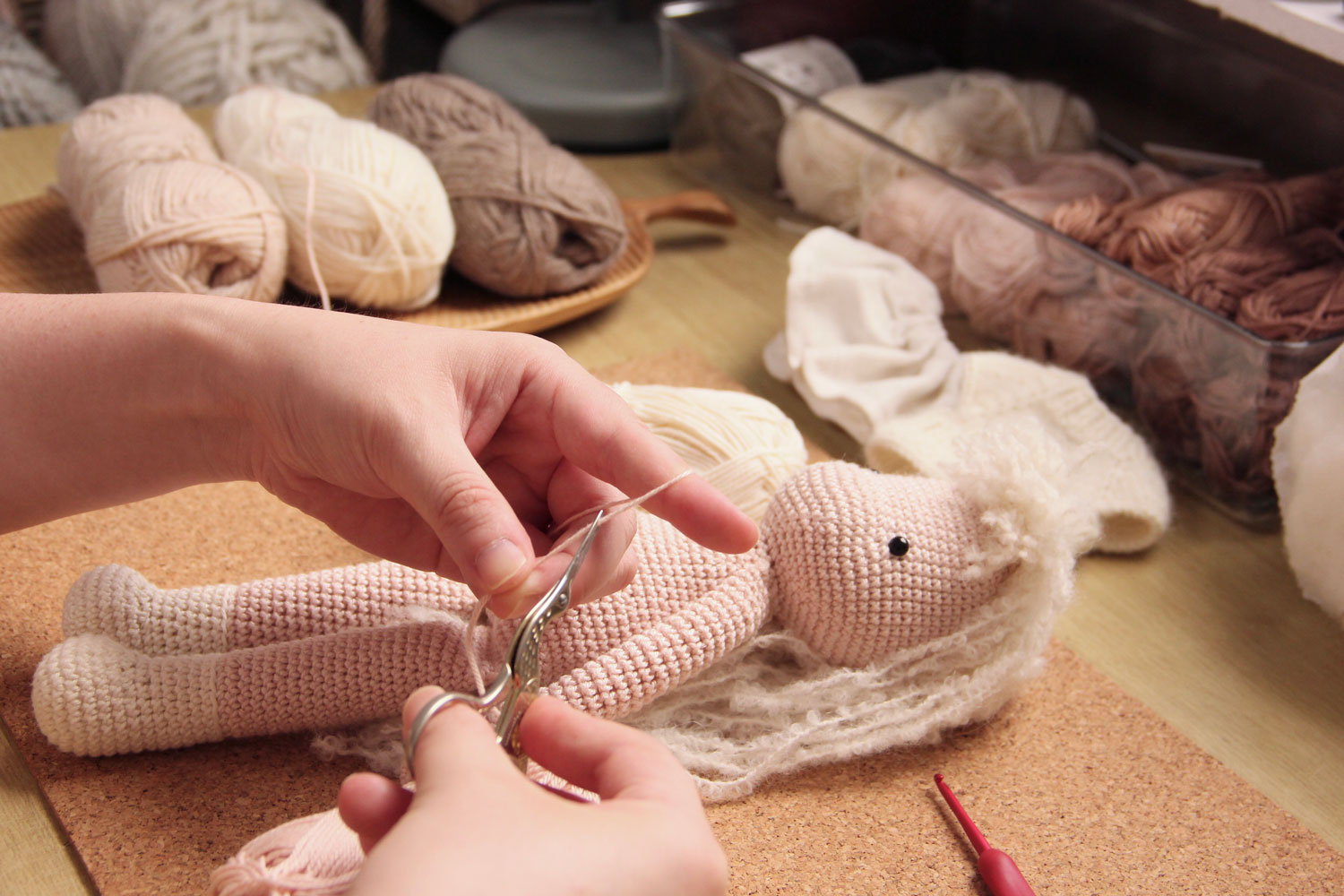
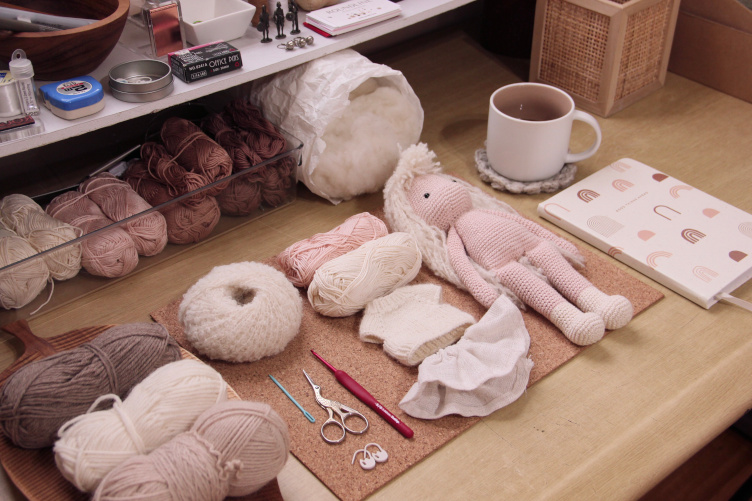
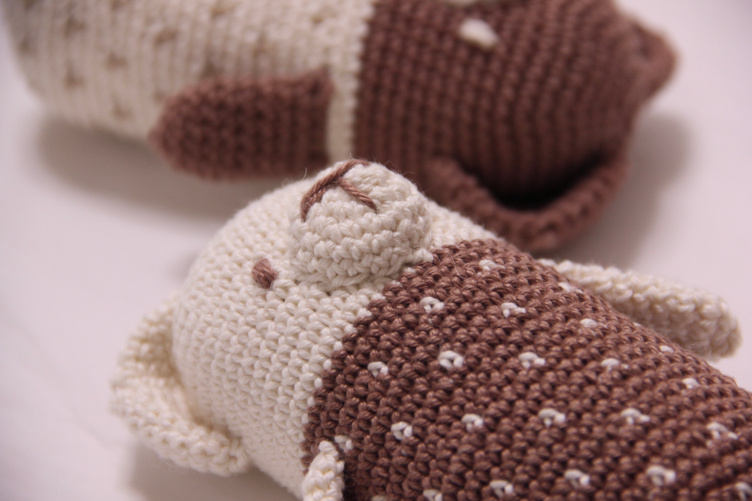
What inspires you?
Bohemian style and minimalism always inspire me, which is influences from my graphic design experiences. I worked as a graphic designer in South Korea for two years and designed many educational books for children.
Bohemian style, traditionally rooted in Europe’s Christian society, embodies a fusion of exoticism and freedom from conventional social norms, making it a unique European style. By the late 20th century, it became widely known to the public through hippie culture. The free-spirited inspiration of impoverished or marginalised artists, unbound by societal norms, continues to influence fashion and interior design today.
Minimalism is an art of simplification and omission, leaving behind only the most significant features or decisive clues of form while eliminating other elements. Consequently, products crafted through minimalism possess both a modest production cost and a distinctive aesthetic form. By accentuating decisive clues, they facilitate rapid comprehension of form and evoke a philosophical element that brings one closer to the essence of existence. (Of course, if these decisive clues are too accentuated, confusion may arise, right?) 🙂
The harmony between Bohemian style and minimalism embodies my ideal design core. Even when decorating, I incorporate only decisive elements, thus creating a modern style that aligns somewhat with the contemporary industrial production system. However, this design approach has its weaknesses. While interpretations of form are infinitely diverse, there are inherent limitations to reproducing the essence of form itself. Consequently, it seems necessary to develop designs quickly, lest “first come, first served” becomes a reality! Overcoming this limitation seems to be my greatest design challenge!
Designing crochet dolls, I’ve observed the grandeur of teddy bears and the importance of character development, which are deeply ingrained in traditional trends. Typically, I start with a sketch and then directly translate it into crochet work, but I find myself exploring more freely interpreted forms, deeply immersed in Bohemian style. While dolls inherently embody ideal forms, embarking on an adventure into the unknown adds a unique joy and value for consumers and collectors alike, I believe.
Is there a philosophy behind your work?
Creating wonderful childhood memories is my goal and a philosophy.
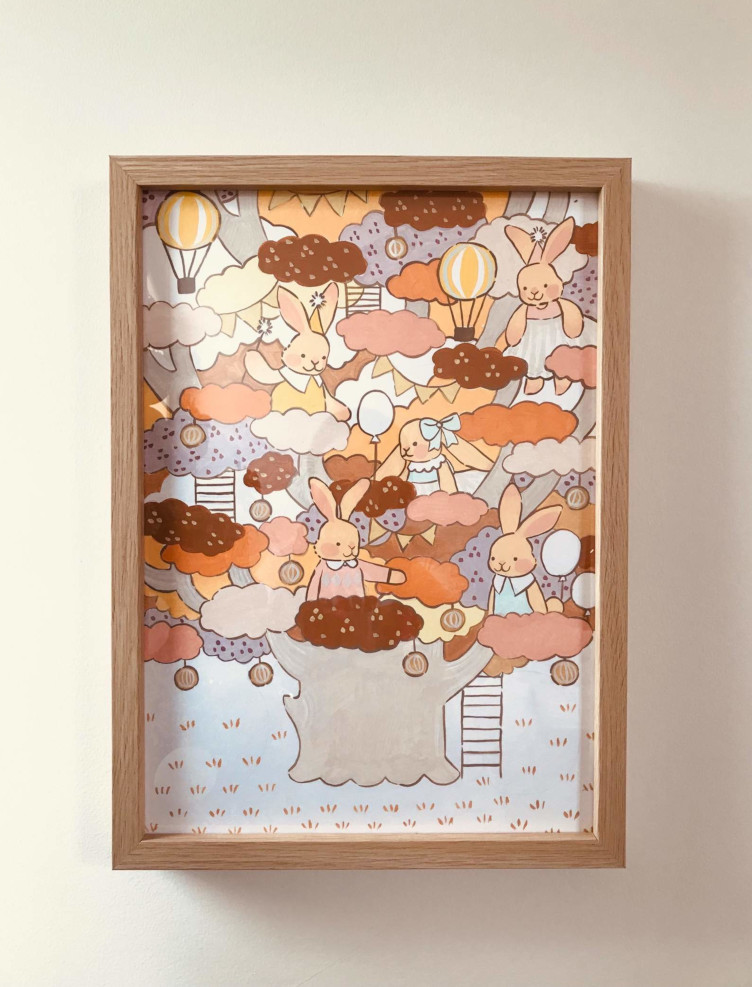
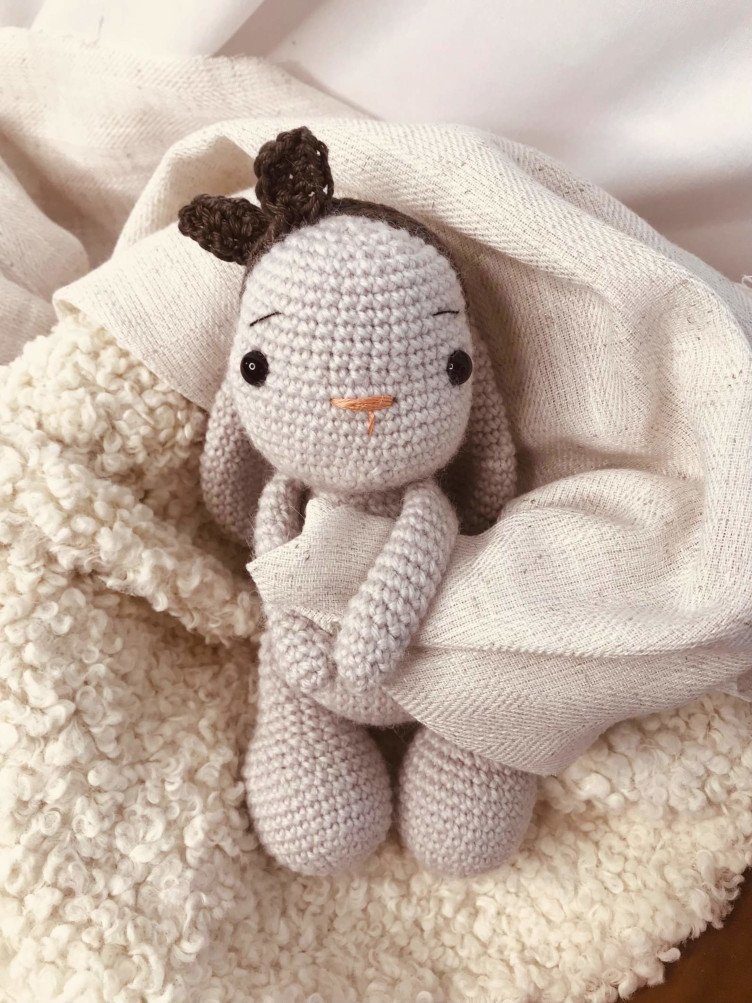
What has been a highlight of your maker journey so far?
Last year I had a commission from Forty Thieves to create twenty toys of the Mr Smuggles character for promoting new kids products. I was so happy and enjoy with working with Forty Thieves peanut butter company which is based in Auckland.
Describe your creative process:
The process is simple: I start by designing a character with some sketches, and then I build crochet forms from them. It usually takes me one to three days to design a character and one to five days to make crochet forms from the sketches.
When designing a character, I often use children’s books as one of my research references. I choose a group of animals and create stories between them, then make some drawings on paper. Each character and series has names and unique stories that can be shared with children. The designs are influenced by bohemian style and minimalism, resulting in unique shapes for each character.
To create crochet forms, I need to choose the sizes of the shapes. Usually, the size is under 30cm in height, as larger sizes are harder to make than smaller ones. I record every number of stitches and write them down in my notes. Creating the first sample is always fun, and then I adjust some details from the initial sample. After that, I choose the colours for each toy.
To create the final pattern, I use my iPad to write down all the numbers of stitches, take photos of each key point in the process, and make some video tutorials to demonstrate how to crochet. I prefer using my iPad over a desktop computer because I can carry it anywhere.
Once all the processes are complete, I share my final crochet work on social media platforms such as Instagram, Pinterest, and Facebook.
Describe your workspace:
First of all, you can visit my home-based shop and studio by booking; it’s open to everyone! It’s a simple setup, with me surrounded by yarns, drawings, craft supplies, and delivery packages in my workspace. I have two tables—one for crochet and another for painting and illustration work. Additionally, there’s a small photography studio in the corner, equipped with lighting and a table for photography.
Every morning at 7 am, I wake up, grab a cup of coffee, have a simple breakfast, and take a walk to check the mailbox for all the deliveries, including yarns that I’ve ordered. Then, I head to my studio, where I check all the emails and messages from my iPad. I spend long hours working at the table, so sometimes I take breaks outside in the small garden to get some fresh air. One of the benefits of working from home is being able to control your own schedule. I can have a late lunch or dinner, bring coffee and food into my studio freely, and take a break whenever I feel tired.
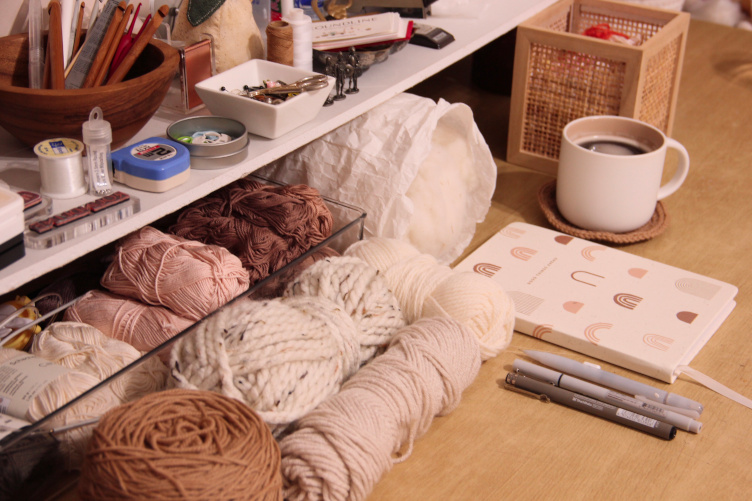
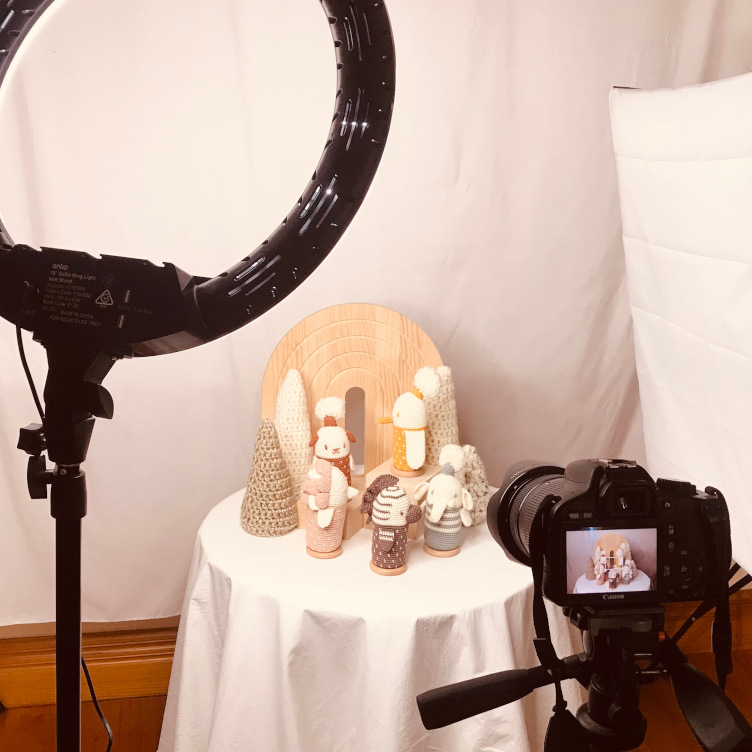
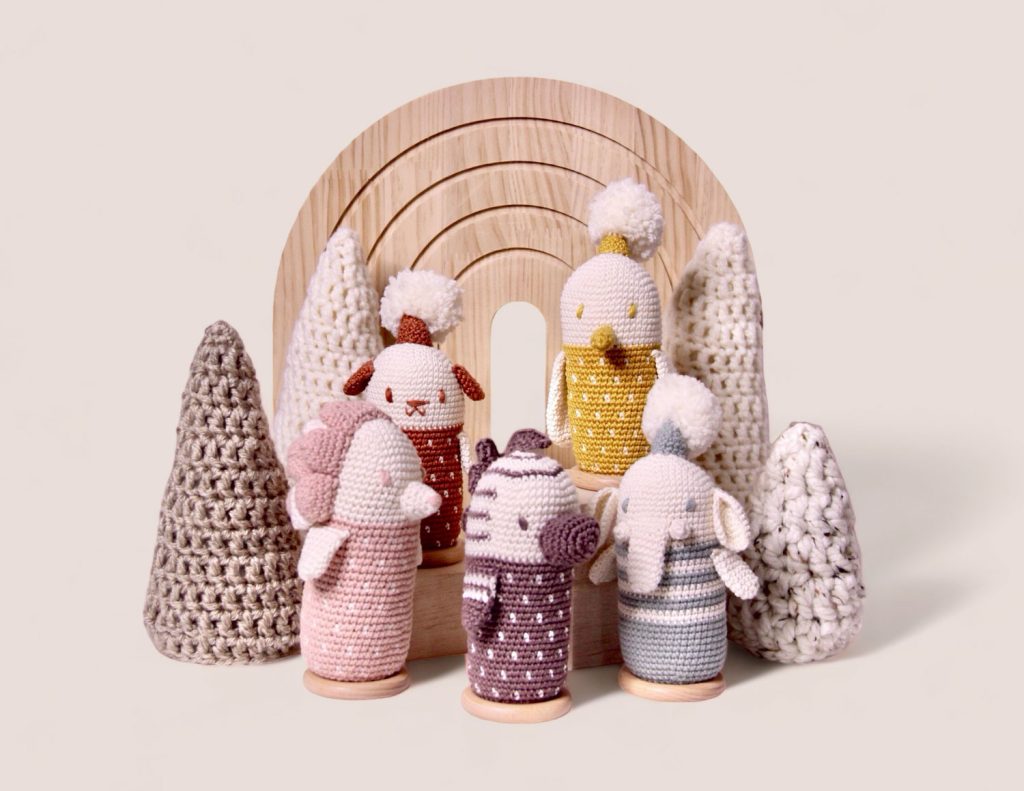
Five words that describe your mind: Create happiness moments for children.
What’s your favourite feedback from a customer?
When I ran the Airbnb in the summer, I gave crochet toys to my visitors as personal presents. One day, there was a visitor from England. I put a crochet teddy bear that I made and some other hair accessories in a gift bag and placed it in front of the door, waiting for the surprise. When she found the gift bag, she called me to say thanks. Then, she discovered the teddy bear inside. Suddenly, she shed some tears because it melted her heart! At that moment, I realized that giving a soft toy as a gift always touches someone’s heart so kindly and leaves a memory that cannot be forgotten.
What are you currently listening to?
Oh music! I always listen to the music from YouTube channels. Simple Jazz or cute musics are just delight my everyday working environment and my feelings.
What are you reading?
I love to collect poems. Recently I brought Shakespeare’s sonnets, which are just beautiful. I have some poem books which introduce French and German poems too. I’m trying to learn some old Latin languages to read old poems as well. I love English literature very much.
Who is your hero/heroine? Why?
Perhaps my heroine is Yan Schenkel, also known as Pica Pau, a renowned crochet toy designer from Argentina. She studied fine arts and industrial design before embarking on her professional journey in crochet toy design in 2009 when she founded Pica Pau. Combining her drawing and crochet skills, she created unique toys with captivating stories.
Her crochet toy books were the first I ever purchased, and I truly admire how she infuses her designs with narrative, providing engaging experiences for children. I learned numerous skills and techniques from her books, which have inspired my own design process as well.
A favourite quote: “Less is more.”
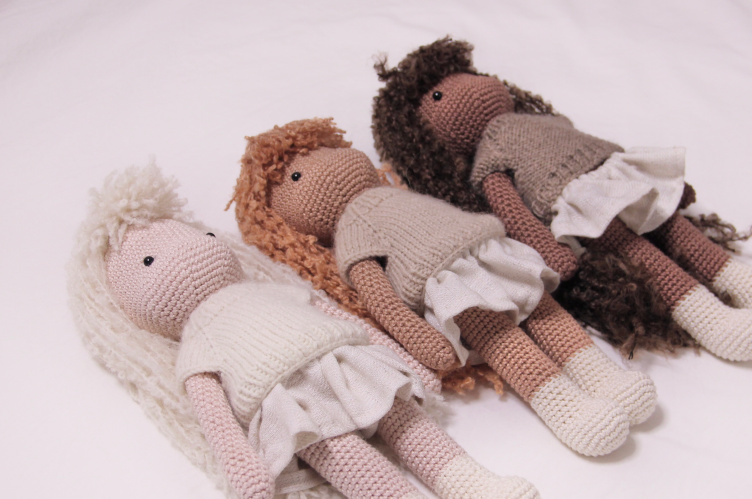
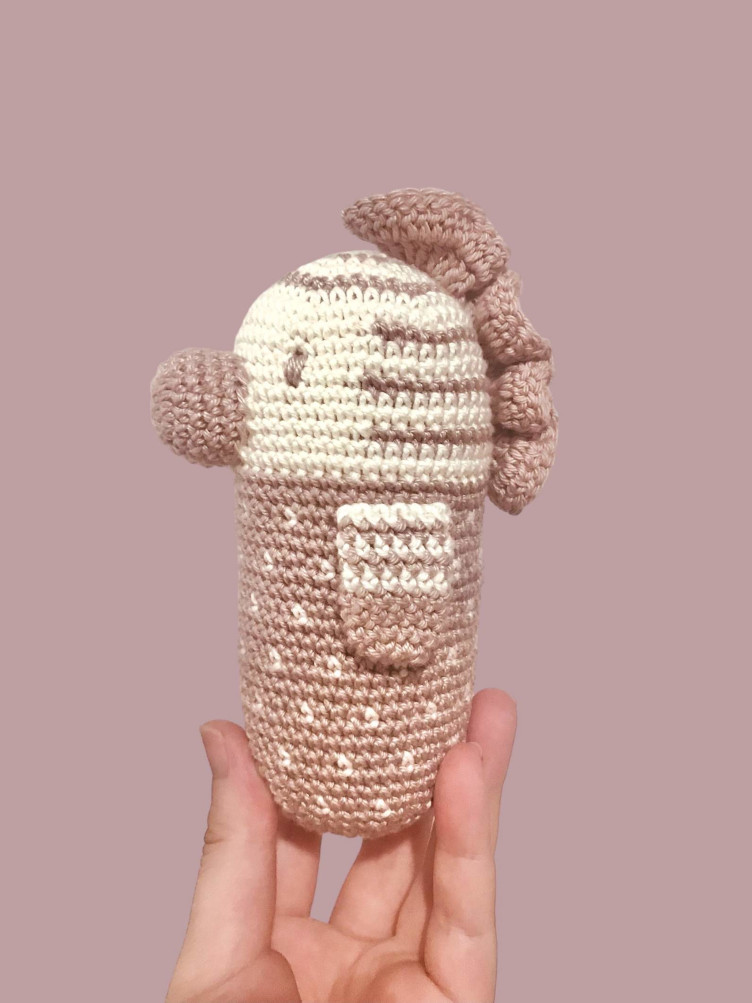
If you were a crafty superhero, what would your name and superpower be?
I like to be called as Roundline, and my superpower would be make everything to round shapes. I love round squares, circles and round corners and lines! I love beauty of soft round shapes.
What would your advice be for those starting out in a crafty business?
Making a solid plan and budgeting are key elements to starting a small craft business. You’ll need a product or service to present to your target audience, and then you’ll need to create your own brand. While many people suggest creating a brand name related to crochet toys or knitting, I chose a name that reflects my passion and love. I believe that if you’re passionate about something, others will love it too, and it will gain recognition.
Budget planning was a challenging task for me. I needed to balance purchasing supplies, setting product prices for selling, covering delivery fees, packaging, advertising expenses, and taxes. Building a website for online sales and participating in Sunday markets were also considered. All expenses and budgets needed to be carefully calculated for each detail.
When I started my craft business, I simply uploaded my creations on Instagram. Then, I began selling some toys at Sunday markets as a hobby. As I became able to create my own designs, I started to consider expanding my crochet business. I designed the toy series first, and then began analyzing the marketplace. Online selling was the best option for me because I always had a small budget. (And I found Felt, which was the perfect online marketplace for me!) I went through many mistakes, accidents, and wrong decisions. (I lost $200 worth of yarn items due to a flood at Auckland airport last year during delivery…) But it was worth it; step by step, I pioneered my way in the small business world. 😂 If you have more questions for starting small business, please send me a messages! I love to share my business experiences and tips to avoid some mistakes.
Finally, my advice is to avoid burnout, maintain your passion, and think about long-term business success. True success comes from long-term planning!
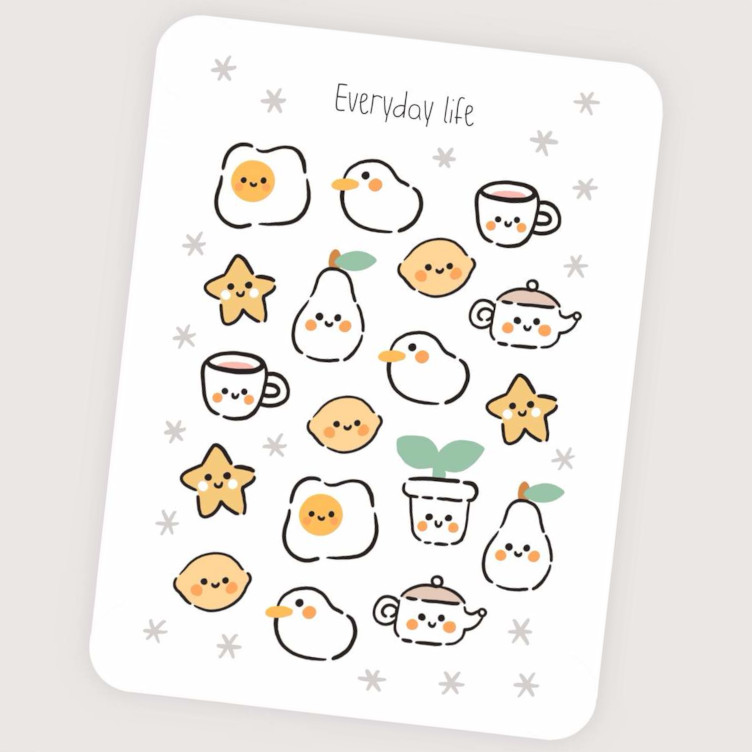
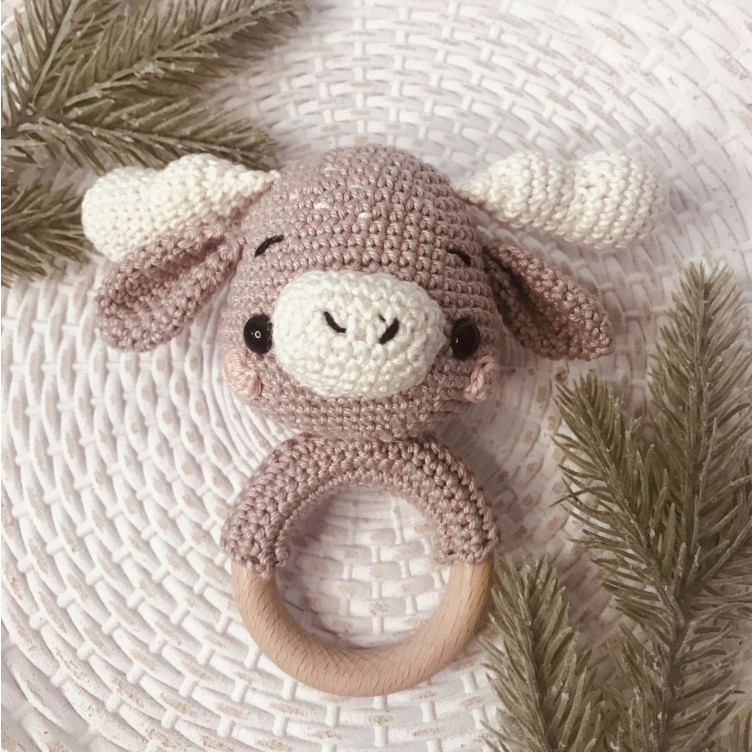
Why do you think it’s important to buy handmade and/or locally made goods?
I believe that the quality and unique design are the keys to the value of handmade and locally made goods. It’s always exciting to meet the original maker of a product, communicate with them, and even customize an order. Unlike factory manufacturing, which often uses limited materials due to cost and processes, handmade items have no such constraints. I believe that many high-end brands have their roots in handmade craftsmanship, which eventually led to success in mass production.
Handmade and local makers continually develop their skills to create something new. They engage in many experiments and hard work, making handmade products an important source of inspiration. If you ever feel bored or tired from the monotony of everyday life, joining handmade craft communities can inject new energy and creativity into your life.
What does it mean to you when someone buys your creations?
I think people buy handmade because they are in love with it, it moves their heart. And it always feels great to be chosen!
What was the last handmade item you bought and what attracted you to it?
I’m also interested in collecting beautiful pottery work! I love the shapes and textures of the surface, especially how they reflect light. When I worked in South Korea, I visited one of the famous pottery places in Seoul. There, I bought a tea cup with a jade color and white, which seemed to combine modern design with traditional Korean pottery techniques. I adore how modern design and traditional aesthetics come together to represent local design.
What’s your favourite item in your shop right now?
The capsule zebra, available in a range of colours, is currently my favourite item in my shop. When I first made the capsule zebra, it was inspired by my cousin, who has experience running a gift shop. She suggested I create a zebra, and I expanded on that idea to create the capsule series. It turned out to be very successful and was the first item sold on Felt!
What’s in store for 2024?
In my shop, you’ll find the Capsule series, Girl Doll series, handmade toys from other designers’ patterns that I adore, and some illustration works. Additionally, I’m planning to introduce more original design crochet toys, such as the ‘Forest Friend series’ and ‘Puzzle series’ along with simple key rings, which were bestsellers at Sunday markets. I’ll also be offering some still life paintings.
